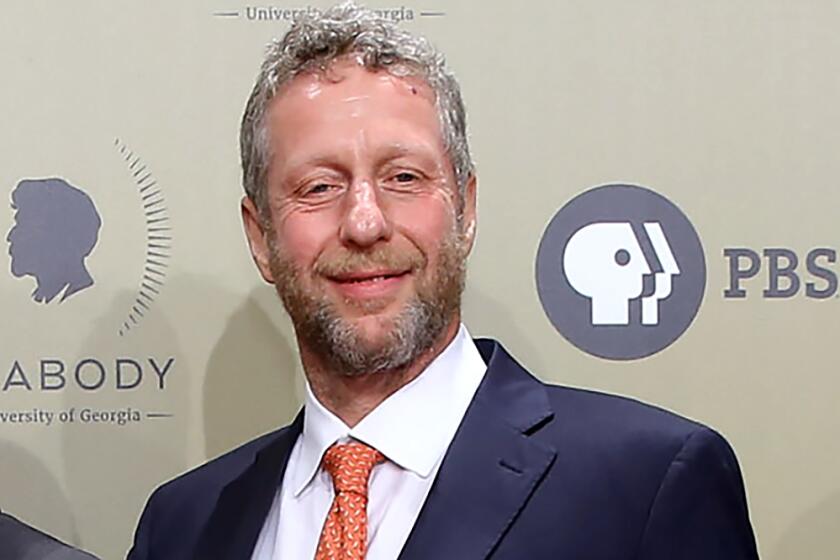McCain mortgage plan would bail out borrowers
Seeking to turn around his faltering campaign, John McCain unveiled a dramatic proposal Tuesday to bail out homeowners struggling to pay their mortgages.
In the second presidential debate, the Republican nominee -- who has railed against excessive government spending and once questioned whether federal money should be spent to help homeowners -- outlined a new $300-billion federal program.
As Barack Obama, the Democratic nominee, watched from a nearby stool, McCain promised to buy failing mortgages directly from homeowners and mortgage providers and replace them with government-backed fixed-rate mortgages.
“Is it expensive?” McCain asked. “Yes. But we all know, my friends, until we stabilize home values in America, we’re never going to start turning around and creating jobs and fixing the economy.”
McCain’s campaign issued a 1 1/2-page fact sheet to explain his call for the massive federal intervention, which it called the American Homeownership Resurgence Plan. The campaign noted that the $700-billion financial rescue package approved by Congress last week gives the Treasury Department authority to directly buy mortgages, but added, “It may be necessary for Congress to raise the overall borrowing limit.”
Treasury Secretary Henry M. Paulson has given no sign that he would spend any of the money to bail out individual lenders and borrowers. Rather, he has made it clear that he considers it the government’s responsibility to assure the stability of the credit markets.
Bill Burton, a spokesman for the Obama campaign, said the idea was not a new one and noted that the Illinois senator had raised it. On Oct. 1, in a news release, Obama said he intended to “encourage Treasury to study the option of buying individual mortgages like we did successfully in the 1930s.”
McCain has based his presidential bid in part on frequent calls for cuts in government spending and regulation. His housing bailout proposal was a surprise in a debate that could prove a crucial pivot as the race enters its final month.
Polls have shown that voters consider the economy the most important issue and that they trust Obama more than McCain to turn the economy around.
The Arizona senator’s bailout bid carries some political risk. Democrats have sought to portray him as erratic and impulsive, and his decision to announce a vast new government program may provide new fuel for his critics.
When the mortgage crisis first ballooned, Obama offered a plan that included aggressive regulation of financial institutions, relief for homeowners and a $30-billion economic stimulus package. McCain criticized it as a “multibillion-dollar bailout for big banks and speculators” and said, “There is a tendency for liberals to seek big government programs that sock it to American taxpayers while failing to solve the very real problems we face.”
After he was criticized for downplaying the government’s role in responding to the crisis, he changed course. He proposed spending up to $10 billion for government-backed mortgages for “well-meaning, deserving homeowners” facing foreclosure.
According to the outline of McCain’s newest proposal, the federal government would pay borrowers and lenders in full, regardless of how wise or fair the original transaction was. Lenders would be able to remove the bad mortgages from their balance sheets, and borrowers would be able to refinance into government-guaranteed loans. Mortgage holders would have to prove they lived in the home and had good credit at the time of the original loan.
This approach has been largely rejected by both Democrats and Republicans because it would be likely to reward the kind of bad lending and borrowing practices that caused the housing crisis while doing little to help stretched but conscientious homeowners.
By contrast, the housing bill passed by Congress over the summer, and which went into effect Oct. 1, required lenders to take a loss by writing down the principal on troubled mortgages to 85% of the house’s current value. Borrowers with adequate incomes and credit records would then qualify for refinanced mortgages from new lenders.
Government funds were used only to help finance mortgage insurance for the new loans; cost estimate for taxpayers was roughly $20 billion.
--
maura.reynolds@latimes.com
More to Read
Get the L.A. Times Politics newsletter
Deeply reported insights into legislation, politics and policy from Sacramento, Washington and beyond. In your inbox three times per week.
You may occasionally receive promotional content from the Los Angeles Times.







